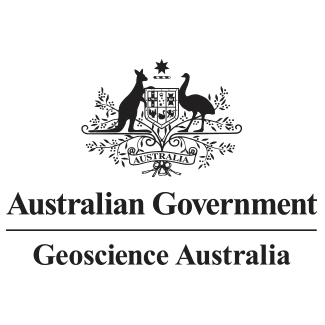Brief description
Gravity data measure small changes in gravity due to changes in the density of rocks beneath the Earth's surface. The data collected are processed via standard methods to ensure the response recorded is that due only to the rocks in the ground. The results produce datasets that can be interpreted to reveal the geological structure of the sub-surface. The processed data is checked for quality by GA geophysicists to ensure that the final data released by GA are fit-for-purpose.
This National Gravity Compilation 2019 tilt grid is derived from the 2019 Australian National Gravity Grids A series. These gravity data were acquired under the project No. 202008. The grid has a cell size of 0.00417 degrees (approximately 435m). This gravity anomaly grid is derived from ground observations stored in the Australian National Gravity Database (ANGD) as at September 2019, supplemented with offshore data sourced from v28.1 of the Global Gravity grid developed using data from the Scripps Institution of Oceanography, the National Oceanic and Atmospheric Administration (NOAA), and National Geospatial-Intelligence Agency (NGA) at Scripps Institution of Oceanography, University of California San Diego. Out of the approximately 1.8 million gravity observations, nearly 1.4 million gravity stations in the ANGD with marina data were used to generate this grid. The ground gravity data used in this grid has been acquired by the Commonwealth, State and Territory Governments, the mining and exploration industry, universities and research organisations from the 1940's to the present day. Station spacing varies from approximately 11 km down to less than 1 km, with major parts of the continent having station spacing between 2.5 and 7 km. Terrain corrections to gravity were calculated using both offshore bathymetry and onshore topography data. A tilt filter was then applied to the complete spherical cap Bouguer anomaly (A series) to produce this grid covering Australia and its continental margins.
Lineage
Maintenance and Update Frequency: notPlanned
Statement: This National Gravity Compilation 2019 tilt grid is derived from the 2019 Australian National Gravity Grids A series. These gravity data were acquired under the project No. 202008. The national grid has a cell size of 0.00417 degrees (approximately 435m). This gravity anomaly grid is derived from ground observations stored in the Australian National Gravity Database (ANGD) as at September 2019, supplemented by offshore data sourced from v28.1 of the Global Gravity grid developed using data from the Scripps Institution of Oceanography, the National Oceanic and Atmospheric Administration (NOAA), and National Geospatial-Intelligence Agency (NGA) at Scripps Institution of Oceanography, University of California San Diego. Out of the approximately 1.8 million gravity observations, nearly 1.4 million gravity stations in the ANGD and marine data were used to generate this grid. The ground gravity data used in the national grid has been acquired by the Commonwealth, State and Territory Governments, the mining and exploration industry, universities and research organisations from the 1940's to the present day. Station spacing varies from approximately 11 km down to less than 1 km, with major parts of the continent having station spacing between 2.5 and 7 km. Three processes are required to correct the gravity observations for the effects of the surrounding topography: (1) a Bouguer correction (Bullard A), which approximates the topography as an infinite horizontal slab; (2) a correction to that horizontal slab for the curvature of the Earth (Bullard B); and (3) a terrain correction (Bullard C), which accounts for the undulations of the surrounding topography. The complete spherical cap Bouguer gravity anomalies were calculated by applying terrain correction (Bullard C) to the spherical cap Bouguer anomaly point data of 2019 Australian National Gravity Grids. These corrections were calculated using software that is based on a combination of the methods described by Nagy (1966) and Kane (1962). The adjustments were calculated to a radius of 166.7 km using a terrain density of 2670 kg/m3 and a sea water density of 1030 kg/m3. The terrain for onshore Australia was based on 3 second Shuttle Radar Topography Mission (SRTM) data (Gallant et al., 2011), whilst the bathymetry and the terrain data for other countries was based on AusBath09 (Whiteway, 2009) and ETOPO data. More information about the 2019 national gravity grids and the processing steps can be found in Lane et al. (2020a,b). The grid shows the tilt filter of the complete Bouguer anomalies (A series) over Australia and its continental margins. A tilt filter was calculated by applying a fast Fourier transform (FFT) process to the complete spherical cap Bouguer anomaly grid of the 2019 Australian National Gravity Grids A series to produce this grid. This tilt filter was calculated using an algorithm from the INTREPID Geophysics software package. A tilt filter is a ratio of the vertical derivative to the total horizontal derivative and is used for detection of edges of geological units. Details of the specifications of individual surveys held in the Australian National Gravity Database (ANGD) can be found in the Second Edition of the Index of Gravity Surveys (Wynne and Bacchin, 2009).
References: :
Intrepid Geophysics, http://www.intrepid-geophysics.com;
Gallant, J.C., Wilson, N., Dowling, T.I., Read, A.M., and Inskeep, C., 2011. SRTM-derived 3 Second Digital Elevation Models Version 1.0. Geoscience Australia, Canberra. https://pid.geoscience.gov.au/dataset/ga/72760;
Kane, M. F., 1962, A comprehensive system of terrain corrections using a digital computer, 27, 455- 462; ;
Lane, R. J. L., Wynne, P. E., Poudjom Djomani, Y. H., Stratford, W. R., Barretto, J. A., and Caratori Tontini, F., 2020a, 2019 Australian National Gravity Grids: Geoscience Australia, eCat Reference Number 133023, https://pid.geoscience.gov.au/dataset/ga/133023;
Lane, R. J. L., Wynne, P. E., Poudjom Djomani, Y. H., Stratford, W. R., Barretto, J. A. and Caratori Tontini, F., 2020b, 2019 Australian national gravity grids explanatory notes: Record 2020/22, Geoscience Australia, Canberra, http://dx.doi.org/10.11636/Record.2020.022;
Nagy, D., 1966, The gravitational attraction of a right rectangular prism: Geophysics, 31, 362-371;
Whiteway, T. G., 2009. Australian Bathymetry and Topograhy Grid, June 2009. Geoscience Australia, Canberra. http://dx.doi.org/10.4225/25/53D99B6581B9A 20170906;
Wynne, P. and Bacchin, M., 2009. Index of Gravity Surveys (Second Edition). Geoscience Australia, Record 2009/07.
![]()



